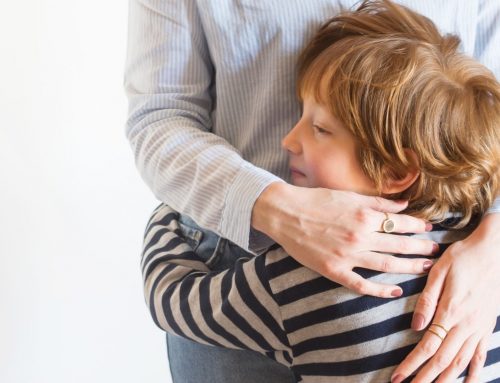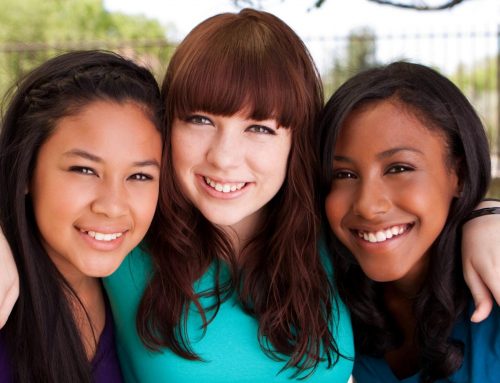10 Steps for Supporting Emotional Regulation Through Co-Regulation
Self-regulation is the ability of a child to manage their thoughts, feelings, and actions. It helps them to remain calm and alert and supports the capacity to “respond”, rather than “react” when faced with strong emotions and stressors in life and their environment. For example, self-regulation helps a child to calm themselves before a tantrum gets out of control, or to solve a problem without giving up. Without self-regulation, children may experience difficulty developing meaningful reciprocal friendships, challenges engaging in learning, and developing appropriate levels of self-confidence. When children are babies, parents tend to teach them self regulation by mirroring their gestures, their emotions and their engagement back to them. Through this natural process of coregulation, they learn skills to self regulate.
As children get older, If they struggle to self regulate, one of the ways to help them (or anyone in fact) to self-regulate is through co-regulation. Co-regulation is when someone who is feeling relaxed (you) can basically “share your calm” with someone experiencing intense negative emotions. It’s a warm, responsive, and empathetic way to support or even “coach” your child through overwhelming feelings to help them regulate their nervous system. When children are overwhelmed, feeling traumatised or having an anxious or angry meltdown, you can help them learn to regulate themselves through co-regulation. This is where you stay present for them, help them understand and work through this challenging experience and move toward helping them to understand themselves and their reactions better. The goal is to help them to regulate themselves and their emotions while in a highly emotional state.
Self-regulation is a skill we increasingly develop over time starting from childhood, but when they are feeling overwhelmed, children can struggle to self-regulate and may need support to do this. When someone is in acute distress, they may find it difficult to think rationally or problem-solve. This is because they may be struggling to process all the information, stimulation, and demands placed on them. They may experience a chemical rush that creates a sense of chaos where they are unable to think rationally and react rationally. At this time, they are reacting without thinking and can be impulsive, be in fight/flight/ freeze mode, and struggle to make good decisions.
Co-regulation is one of the ways we can help to contain them to manage their emotions and overwhelm. It can potentially help them get back to self-regulating their thoughts, feelings, and choices. It is a way of helping someone who is struggling mentally and emotionally rebuild their own self-regulation skills, which are needed to manage their thoughts and emotions.
There are a number of steps involved in co-regulation. In order to do this effectively, we need a warm relationship, environmental structure, and the skills to know how to help and anticipate what your child needs. We start with being physically present and connecting with your child, then move on to emotional presence and finally on to helping them explore rational thought. Sometimes, before co-regulation can occur, they need to have had time to ‘melt down’ and express their built-up feelings.
10 Steps for Empathic Co-Regulation
Physical Factors
- There are many physical strategies to deescalate/calm down a highly emotional situation in the moment, such as breathing exercises, pressure hugs, weighted blankets, soothing activities, and movement like yoga.
- Go to their physical level and establish eye contact. This will help them to feel noticed, to feel more connected and can be very calming. It’s important that the person doing the co-regulating tries to establish calm and loving eye contact. For children who struggle with eye contact, move on to the next step.
- Create appropriate physical contact. This level of contact must be comfortable for the person trying to self-regulate how they feel. This could be putting a hand gently on their arm but for many children feeling distressed, it might be more appropriate to simply sit near them and let them feel your presence.
Emotional Factors
- Be aware of how YOU are coming across to them. Notice your tone and whether your expressions are calm and accepting. In times of stress, are you able to still convey a loving, supportive, and soothing tone and environment?
- Notice your non-verbal communication. Your facial expressions, hand gestures, body movement, posture, and pacing all reflect your emotions and are felt by your child during your interactions with them.
- Notice your tone. Try and speak calmly where your tone is warm and accepting. (You might need to do breathing exercises and calm yourself before trying to co-regulate).
- Hear and validate their emotions. You may need to help them by putting words to their experience. You can do this by reflecting what you perceive them to be feeling and helping them to name what you are observing, asking if this is correct, and then offering calming decompression techniques like deep breathing as needed. Create a judgement-free environment where all feelings and emotions are accepted as this is what they are perceiving.
- Give them time to hear you and to respond. It is helpful to have patience rather than rushing them to calm down and hear what you are saying.
Thoughts
- Once you are sure that you have engaged them, you can move on to supporting them with self understanding and strategies.
- Once the person has calmed down physically, as a co-regulator, you can help them learn to gain more control over their thoughts. This would involve ‘thinking about thinking’ and helping them to separate out thoughts from facts. As you do this, you help them override the force of their learnt responses and thoughts that have become habitual thoughts, and teach them that they can choose to speak or act, or not speak or act, according to this thought. As the co-regulator, you are helping them to gain perspective, to feel more in control of their behaviour and circumstances, and you empower them to recognise their feelings and choose how they respond.
Co-regulation involves openly modelling how you self-regulate, but only do this after you have helped your child to become physically calm. You can show them how to calm physically, become aware of their emotions, become aware of their stress and how it us affecting their body and thoughts, and gaining an understanding of what they feel, and why they are feeling it. Finally, if appropriate to the situation, support them to challenge their thoughts in a supportive way. For some children, this part of the process may take place later when they are calmer and have had time to process the experience.
If you need more practical support, the POWER program has practical strategies to help you to teach children to self-regulate as well as the strategies needed to manage each step of this process from physical awareness, to emotional awareness, challenging thoughts, changing habits, managing anxiety and anger, and becoming empowered to manage situations more easily.




